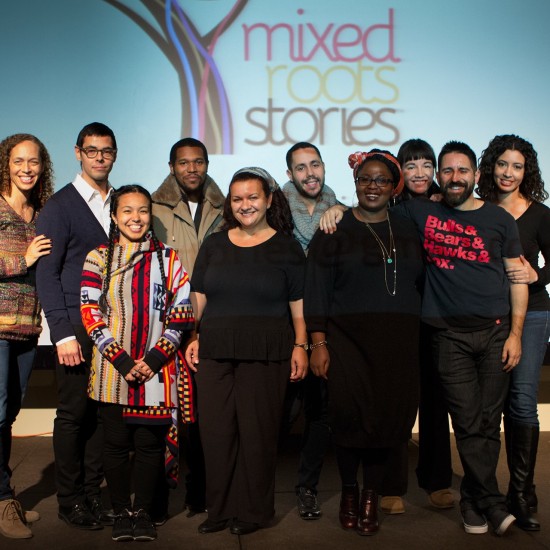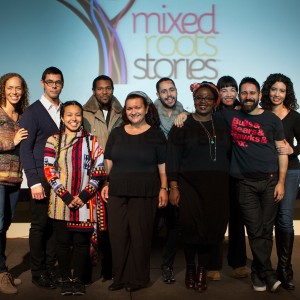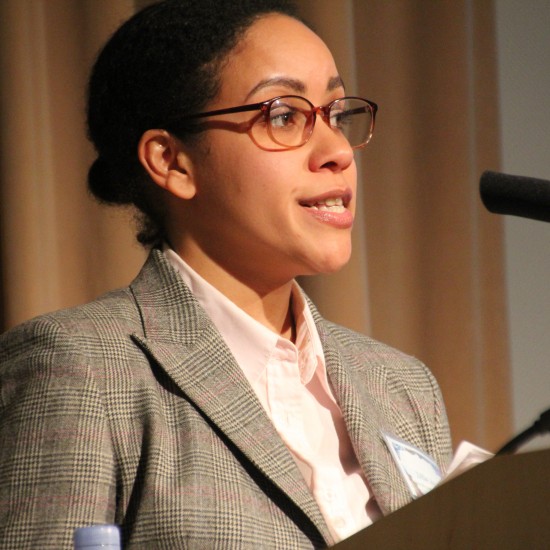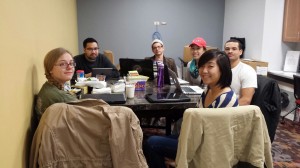Dear Friends and Communities of MXRS,
We are so pleased to introduce our new MXRS Commons as part of our Arts and Education Programming. This online forum invites scholars, artists, and activists to gather around central themes and debates taking place in Critical Mixed Race Studies today. Our MXRS team hopes to facilitate thoughtful responses to challenging and controversial issues, as well as critiques of Mixed Race Studies, popular culture, and public discourse.
This Commons takes shape as a collection of concise thoughtpieces–most organized into cluster conversations between each of the participants. We invite you to follow these conversations as they take place right here on our website each month.
Our inaugural conversation, Island Relationality: Diasporic Indigeneity and Critical Mixed Race Studies, is one of great importance and its topics are often overlooked or understudied within Mixed Race Studies contexts. This first Commons brings together three innovative graduate students doing interdisciplinary work at the intersections of race, place, and decolonial studies, and we are excited to share with our MXRS communities a preview of their work.
Thank you for your continued support and curiosity. And most importantly, thank you for sharing your stories!
Stephanie Sparling Williams
Arts and Education, Chair
MXRS Commons Editor
Mixed Race and Diasporic Indigeneity in Kristiana Kahakauwila’s “Thirty-Nine Rules for Making a Hawaiian Funeral into a Drinking Game”
By: Joyce Pualani Warren
Rather than discrete concepts, Kanaka Maoli (Native Hawaiian) epistemology theorizes time and space as enmeshed and liminal. They are mutually constitutive: In the Hawaiian language, the past is ka wā mamua, what is in front of us; and the future is ka wā mahope, what is behind us.[1] This relationship is mediated by the Kanaka Maoli body and its maintenance of kinship ties between humans and their surroundings: As Lilikalā Kameʻeleihiwa asserts, “the genealogies are the Hawaiian concept of time, and they order the space around us.”[2] However, over the last two centuries U.S. political and economic interests have consciously displaced genealogy as a tool for understanding the Kanaka Maoli’s position in the world, and instead privileged racial blood quantum as the determinant of group belonging. But how is belonging perceived among contemporary Kānaka Maoli (Native Hawaiians) who evade or refuse the exactitude of blood quantum? Furthermore, with a huge portion of Kānaka Maoli residing in the diaspora, how are issues of belonging now compounded by space and time, by how far or how long one has been away from the islands?
This paper utilizes the bodily liminality of the epistemological connections between time and space to index the shifting articulations of belonging in contemporary Kanaka Maoli communities; particularly as they are presented in Kristiana Kahakauwila’s short story “Thirty-Nine Rules for Making a Hawaiian Funeral into a Drinking Game.” This is Paradise, Kahakauwila’s collection of short stories, reveals the malleable intersectionality of diasporic Kanaka Maoli identity: localness is racialized in one text and temporalized in another; indigeneity is spatialized in one text and racialized in another. By close reading key moments of bodily engagements with time and space in “Thirty-Nine Rules for Making a Hawaiian Funeral into a Drinking Game,” I offer a theorization of indigenous cosmogony and epistemology that embraces the liminal as a productive site for discussions of belonging for mixed-race and diasporic Kānaka Maoli.
“Hawaiian, but no Local”
“Thirty-Nine Rules for Making a Hawaiian Funeral into a Drinking Game” pushes us to explore how diasporic offspring bring their own experiences of place and race to bear on their interactions with on island relatives and communities. The anonymous protagonist, a hapa haole (half foreign, half white) English major from California, moved back to Honolulu a year ago to be near her ailing grandmother. The story unfolds during the funeral services and wake for her grandmother, detailing how both the protagonist and her relatives come to understand and accept her liminal positionality.
This liminal positionality is located at the intersection of place and race. The protagonist often finds herself “hovering around the exterior,” feeling as if she does not quite belong because she presents as mixed race and grew up in California.[3] In this story, race and place combine to enhance her marginality, as she reminds herself: “After all, you were not born on Kauaʻi. You weren’t even born in Honolulu. No, you were raised a California girl, like your mother before you. She is haole. White. A foreigner. This makes you hapa haole. Half white. Half foreign.”[4] As her distance from Kauaʻi increases, so does her foreignness. This distance seems to compound her racial foreignness. Because her mother, a foreigner, is white, the protagonist is then perceived by herself and others as racially and spatially foreign. Her father, who is Hawaiian, is also of mixed ancestry, yet this goes unmarked, as her composition of “half foreign” is predicated on her being half native. The only reference to her father’s racial background comes when she sees a photograph of her paternal grandfather for the first time and observes, “He pulls more Chinese than you expected.”[5] Her father’s mixed racial background is mitigated by his proximity to Kauaʻi, being born and raised there.
However, his location and genealogical ties are also complicated by his desire to live a life that is not necessarily in step with traditional Hawaiian cultural protocol. As the narrator observes, “he is Hawaiian but no local.”[6] In observing familial interactions she reflects on her father’s divergent path and creates Rule 29: “Understand your dad was different from the outset…After all, to be a boy and diverge…to leave the island for boarding school; to want to go to college on the mainland; to want to stay there, on the mainland, with only one child to his name, and a girl at that, is to cease to want what men want…Because he is Hawaiian, but no local.” The protagonist’s burgeoning awareness of this mixed identity is part of a shift in her own understanding of Kanaka Maoli kinship systems, racial identity, and constructions of belonging.
A family gathering in Hawaiʻi filled with aunts and uncles as well as “eighth cousin[s] four times removed” and hānai cousins is the perfect backdrop to navigate belonging for a mixed race, diasporic, only child.[7] As nineteenth-century Kanaka Maoli historian David Malo reminds us: “The genealogies have many separate lines, each one different from the other, but running into each other. Some of the genealogies begin with Kumu-lipo…This is not like the genealogy from Adam, which is one unbroken line without any stems.”[8] After talking story with relatives and recognizing how Kanaka Maoli genealogies may incorporate other racial identities, as in the case of her father’s Chinese ancestry, the protagonist begins to recognize the ways her family consciously affirms her belonging.
This affirmation is presented through constructions of spatial inclusion. In contrast to her initial inclination to “[hover] around the exterior,” a cousin invites the protagonist to go surfing with a group: “He’ll tell the other guys to let you catch some waves. He’ll tell the other guys you’re his cuz. He’ll take care of you, and you know what this means: You are no longer some Honolulu hapa. You are a Napili. You have one more name, another branch of family to whom you belong. One more from which you can’t escape.” [9] In contrast to the linear and static ideas of Western identity which undergird the protagonist’s initial feelings of marginality, Kanaka Maoli epistemology affirms that one’s current kinship ties, and subsequently one’s status, are not necessarily fixed from the moment of birth but may broaden and shift—as evidenced by the protagonist’s realization that she is “no longer some Honolulu hapa.” As J. Kēhaulani Kauanui writes: “whereas in the colonial frameworks a person’s vital substance comes from genetic inheritance, in the Pacific Islands context, one’s substance is acquired through genealogical inheritance and sustenance from feeding in any given set of relationships.”[10] American notions of identity are based largely on the immediate conditions surrounding one’s birth and the supposed inherent qualities of nationhood and race became conflated in an attempt to pre-determine the character and quality of a being. In this way the American concept of kinship is a restrictive force, an “unbroken line” with no “stems,” that only recognizes immediately tangible relations with no significance placed on shared histories and is essentially restrictive or exclusionary while the Kanaka Maoli mode is inherently extensive and inclusionary. This extensive and inclusive mode reveals a potentiality for belonging that is located within the body, but is not beholden to American discourse’s finite and tangible constructions of identity which initially plagued the protagonist.
Conclusion: Looking to the Source
Oddly enough, I’d like to close this piece with a discussion of this boundless potentiality. Specifically, I’d like to genealogize some of these constructions of belonging by keeping the Kanaka Maoli cultural mandate to nānā i ke kumu, to look to the source. In the aforementioned quote from David Malo, which discusses kinship systems, he affirms that many genealogies begin with Kumulipo. And as Lilikalā Kameʻeleihiwa again reminds us, “the genealogies are the Hawaiian concept of time, and they order the space around us.” A 2,000 line chant that is simultaneously cosmogony, genealogy, poem, and history, the Kumulipo details the unfolding of the universe from the potentiality of pō—the void, the night, the generative space—all the way through the gods, plants, and animals to man.
This unfolding of the universe through pō and ao is divided into 16 wā. More than handy divisions for storytelling, the wā also reflect the epistemological constructions of time and space which are part of the development of the universe. In Hawaiian, wā can mean era, time or season, as well as “space, interval, as between objects or time.”[11] The enmeshed and liminal relationship between time and space, and the fact that they are constitutive elements of Kanaka Maoli genealogical connections to the universe and humanity, reveal bodily mediations of time and space as defining elements of Kanaka Maoli belonging. As a history of creation and a genealogy which connects the Kanaka Maoli individual to the rest of the universe, the Kumulipo reveals the pō as a tool for understanding and maintaining one’s place in the world—and as such, many Kanaka Maoli see the pō’s liminal potentiality as that which orients and secures their identity.[12]
From this position of privileging humanity’s relationship to the potential of liminal times and spaces, I read Kahakauwila’s work as a theorization of indigenous epistemology that embraces the diasporic and intersectional belonging of contemporary Kanaka Maoli. Wā, as time and/or space, is a simultaneous recognition of difference and relationality and is something to be nurtured. If the future is truly ka wā mahope, that which is behind us, then serious conversations of decolonial futures must be firmly rooted in the past. Thus, if we take seriously the charge to nānā i ke kumu, to look to the source, it seems that we must embrace the liminal as a productive site for discussions of belonging for mixed race and diasporic Kānaka Maoli.

Bio:
Joyce Pualani Warren is a PhD candidate in the Department of English at University of California, Los Angeles. Her research interests include: Kanaka Maoli epistemologies and ontologies, indigeneity in the diaspora, decolonial theory, critical race and ethnic studies, American studies, Pacific Islands literature, and American literature.
RESPONSE
As Joyce accurately stated in her discussion on bodily liminality, examining the past is an instrumental component to decolonization. As a historian, I constantly remind my students that history is important because it helps explain the present. Moreover, Joyce’s statement on Kanaka Maoli epistemology regarding time and space gives us insight into understanding how native Hawaiians understand genealogy and how it differs from western notions of family. Thus, Kanaka Maoli epistemology regarding family, kinship, and land provides a conceptual alternative to western notions of race, diaspora, and belonging. This alternative is flexible since time and space are “enmeshed” and transcends how most people interpret western constructs of race and inclusion/exclusion. All in all, I believe Joyce’s work provides a point of entry in which we can rethink diasporic identity.
-Alfred Flores
By engaging Kanaka Maoli spatial and temporal frameworks, Joyce articulates the ways in which one can more easily envision the many lenses from which people theorize their own genealogical connections to land, futurity, the past, and our shared contemporary moment. Joyce’s work powerfully destabilizes continental conceptions of spatiality and temporality that are used to Other island knowledge as isolating and insignificant, as also noted by Epeli Hau‘ofa (1993). By highlighting the complex “enmeshment” of Kanaka Maoli conceptualizations of time and space, Joyce brings to the fore the multiplicity and infinite potentiality of relational experiences within the diasporic Kānaka Maoli and mixed race communities. In noting that “decolonial futures must be firmly rooted in the past” Joyce also actively contests the eradication of Kanaka Maoli cosmogony and reasserts its integral importance within active processes of decolonization and US deoccupation that continue to manifest throughout Hawai‘i’s archipelago.
-Becka Garrison
Island Relationality and Settler Responsibility
By: Rebekah Garrison
In the past year I have begun to think more relationally about particular island spaces and their interconnected histories that produce counter-narratives to US imperialism and militarism. These counter-narratives are understood through the lens of Indigenous geographies that continue to disrupt colonial cartographies that insist on static notions of regionalized areas. As the members of the International Women’s Network Against Militarism (IWNAM) illuminate, the Pacific and Caribbean are not contained, but rather, surge together through demilitarization solidarity. And, as a white settler doing research within Indigenous island space, I continue to work under the methodological approach that I am calling “settler responsibility.”
My research looks at how Indigenous women activists in the Mariana Islands, Hawaiʻi, Vieques, and Puerto Rico link the Pacific Ocean and the Caribbean Sea through demilitarization, as the core, of their social movements. I examine community mobilizations that resulted in the expulsion of the US military, and its allies, from Kahoʻolawe in 1990 and Vieques in 2003 to demilitarization tactics within the contemporary Mariana Islands. Using a combination of archival research, interviews, and participant observation, I write a history of “island relationality.” Meaning, my research disrupts singular studies of islands, and instead, works through the analytic of demilitarization for comparative analysis. By focusing on the IWNAM, I argue that members of this organization construct their own decolonial theorizations of geography. In working together towards creating a network of relations, participants redefine the parameters of thinking through islands as comparative units. I articulate how the histories of Kahoʻolawe and Vieques circulate within the Mariana Islands and cognitively map decolonial forms of island relationality between Pacific and Caribbean islands. Analysis of the IWNAM provides a new discourse regarding the ways in which Indigenous women activists across multiple island sites mobilize solidarity that disrupt cyclical histories of colonialism, while also, imagining a future free of US military imposition.
Before going any further, I’d like to take a moment and flesh out the methodological approach I’m calling “settler responsibility.” As a floating member between the Vieques, Hawai‘i, California, and soon the Mariana Islands chapters of the IWNAM, I am continuously inspired by the California members who fight US militarization from within the “belly of the beast.” While the California chapter is comprised of settlers from various diasporic communities, who may or may not identify as Indigenous, there are also white women who actively participate in the organization, myself included. I situate this diverse set of settlers within a methodological framework of “settler responsibility” that derives from the work of Kanaka Maoli scholar ku‘ualoha ho‘omanawanui and her articulations of “kuleana consciousness” (2012).
In Hawaiian “kuleana” translates to many concepts, but is more generally understood as “responsibility” and “privilege.” According to ho‘omanawanui, “kuleana consciousness extends to all. Settler colonialism benefits settlers and is bent on eliminating the Native. Settlers and others with new insights, having heard this story, can adopt a form of kuleana consciousness” (loc. 2901). I believe that settler responsibility is a form of kuleana consciousness that greatly values listening, and for this reason, the incorporation of oral histories is crucial to my work. When settlers, particularly white settlers are quiet, there’s less cacophony and more mediation towards breaking down socially constructed divisions that continuously hinder us all from transforming how we interact with one another, at both quotidian and structural levels. In adopting a form of kuleana consciousness, I believe that white settlers, too, may participate in processes of decolonization that break from violent narratives that homogenize multiple island sites as an amalgamated Other, as articulated by Epeli Hau‘ofa (1993).
As noted by the work of decolonial scholars like Haunani-Kay Trask (1999), Vince Diaz (2004), and Dean Saranillio (2014) there has been an ongoing call to settlers to be accountable for and take seriously their settler positionality within continual forms of Indigenous dispossession. Saranillio, who has been greatly impacted by the life, scholarship, and activism of Trask, like myself, has an incredibly inspiring utopic vision for settler and Indigenous solidarity. According to Saranillio,
By taking seriously Indigenous knowledges and economies, we can create another future, and in the creation of an alternative future, more space for mutual respect can occur. Settler states have no interests in non-Natives identifying with native movements, as such identification opens our world to alternatives that the settler state denies are possible (204).
I want to be a part of that world which is denied to all of us. Because history making is never experienced by a single group, but rather, is the formation of a shared past, the rendering of history solely through a white colonial lens is not only inaccurate but is violent to us all.
My concept of “island relationality” opens a space of possibility for the development of a more unified island historical discourse, as expressed through the oral histories of Indigenous island subjectivities across multiple regionalized and militarized areas. By incorporating oral histories into my work, past memories entwine with future aspirations and preserve a historical record of island relationality through the lens of demilitarization. Relationality and demilitarization, then, are not in opposition to one another when viewed through the lens of the women of the IWNAM, but rather, complementary to each other. As histories of demilitarization strategies navigate across multiple island sites, so too does a greater understanding of these struggles expand and inspire utopic geographies of Indigenous women activism across oceans and seas. The voices and histories illuminated throughout my research conceptualize new ways of decolonial relationality by emphasizing how human mobility can never be contained to static notions of colonial cartography.
As my work highlights, the ways in which relationality is theorized does not necessarily have anything to do with one’s physical proximity to others, but can be conceptualized in terms of experiential ways of knowing and seeing the world. As the women of the IWNAM bring to bear, the violent totality of US Empire cannot be understood through the research of a single regionalized area. Rather, US Empire must be re-territorialized through the lens of island spatiality, temporality, and subjectivities and contextualized through a multiregional framework. Demonstrating a lingering discontent since the islands were illegally annexed or ceded to the US in 1898, my project addresses the inflexibility that colonial cartographies presume.


Bio:
Rebekah received her B.A. (2006) and M.A. (2010) degrees in Spanish Literature from the University of Hawai‘i at Mānoa and is currently a PhD candidate in the Department of American Studies and Ethnicity at USC. Her research interests include the intersections of empire and island relationality, Indigenous geographies, colonial cartographies, settler responsibility, demilitarism, and decolonial theory and praxis.
RESPONSE
Militarization is a pervasive force that has and continues to negatively impact the lives of people regardless of racial or ethnic background. It also transcends national and territorial borders, which makes it challenging for individual people to combat. However, Becka’s work on the connections of demilitarization in the Caribbean and Pacific reminds us that people have agency against capitalist forces such as militarization and globalization. This agency is also rooted in the possibility of interracial and interethnic solidarity that includes people from various geographic and cultural backgrounds. Just as importantly, Becka offers us a way to think about how white settlers can also be part of this process of decolonization through “settler responsibility.” Moreover, I believe Becka’s work is part of a growing scholarship that is calling for greater solidarity similar to that in the documentaries entitled, Living Along the Fenceline (2011) and Insular Empire (2009).
-Alfred Flores
Becka’s emphasis on the dynamism of indigenous constructions of space and memory underscores the ways lived experiences may combat the rigidity of imperial discourses of knowledge and identity. In highlighting the collaborative work of activists across geographical regions, this piece reminds us that static settler cartographies cannot contain these vibrant and fluid constructions “because they are always transforming through new narratives.” Her attention to the ways women have countered militarism and the imposition of colonial cartographies also provides an entry point for discussions of how intersectional feminisms are useful in combating specifically patriarchal aspects of empire and settler colonialism. In addition to privileging the voices of indigenous feminists, the framework of “settler responsibility” invites a plurality of voices. This reliance on gendered, ethnic, racial, regional, and indigenous diversity is a welcome contribution to demilitarization efforts and settler colonial studies, drawing its strength from the endurance, resilience, and vitality of lived experience.
-Joyce Pualani Warren
U.S. Military Expansion and Settler Colonial Studies
By: Alfred P. Flores
Guam is a 212 square mile island located in the western Pacific Ocean. Specifically, it is the southernmost island of the Marianas Archipelago. The indigenous inhabitant are known as Chamorros. Since the 17th century to the present, Guam has been under the colonial authority of three different nations (Spain from 1688 to 1898, United States from 1898 to 1941, Japan from 1941 to 1944, and the United States from 1944 to the present). Today, Guam is categorized as an unincorporated territory of the United States. While those who are born on Guam are U.S. citizens, they have limited protection under the U.S. Constitution and Bill of Rights.[1] Due to this colonial legacy, scholars have been rewriting the history of Guam by including the marginalized voices of its people.
One of the widely accepted ideas of Guam history is that the Chamorros of Guam were grateful to the U.S. military for “liberating” them from Japan during World War II and were thus, willing to give their land to the U.S. military as an act of gratitude. By 1950, the U.S. military had occupied approximately thirty to thirty-five percent of the entire island. Utilizing declassified archival records from the U.S. National Archives, unseen archival documents from the Nieves M. Flores Memorial Library, and thirty-three oral histories I conducted on Guam, my previous work argued that some Chamorros were actually critical of the U.S. military and vehemently objected to the confiscation of their lands. This was most evident in their opposition to the U.S. military’s attempt to make public spaces such as beaches into restricted areas that were reserved for only the military to use. I also argued that Chamorros continued indigenous practices of land stewardship that included reliance on land for self-subsistence, the cultivation of clan relationships through family gatherings, and on Chamorro preference for land in-exchange rather than monetary compensation for their property that was confiscated. While my approach to studying empire and indigenous resistance has helped me complete the writing of this chapter and my dissertation, I want to push the boundaries of my work to think even more broadly on how the U.S. military has confiscated the land of indigenous people in other parts of the world.
A category of analysis that I am now considering to foreground in this chapter and for my entire manuscript is the idea of settler colonialism. Based on the work of scholars such as Haunani-Kay Trask, Andrea Smith, and Patrick Wolfe, I believe settler colonial studies provides a framework that allows me to not only underscore U.S. military land acquisition as an imperial project but one with the particular goal for the settlement of the U.S. military as a permanent fixture on Guam. Moreover, the settlement of the U.S. military on Guam also works in concert with the displacement of Chamorros from their lands, which is an ongoing issue for Chamorros today. Thus, this will allow me to connect the experiences of Chamorros in Guam to other ethnic, indigenous, and racial groups who have or currently still do live in U.S. military occupied sites. This approach should also lead me to other ways in which people throughout the world have resisted against U.S. military occupation.

Bio:
Alfred P. Flores obtained his Ph.D. in History at the University of California, Los Angeles. Currently, he is a lecturer at California State University, Long Beach and at Pitzer College.
RESPONSE
In this piece, Alfred does an excellent job underscoring how in many instances cartography, the science, practice, and art of drawing maps acts as a mechanism for colonial and militarized processes of Indigenous dispossession, as also noted by Margaret Jolly (2007). In highlighting that some of Guam’s Chamorro community were in “opposition to the U.S. military’s attempt to make public spaces such as beaches into restricted areas that were reserved for only the military to use” one can more accurately see how Indigenous geographies continue to disrupt colonial cartographies. Through the lens of Chamorro oral histories, Alfred’s work actively demilitarizes ways of conceptualizing Guam’s colonial cartography. Alfred’s critical engagement with previously classified archival records demonstrates the ways in which Guam’s Chamorro community continues to challenge settler conceptions of the island’s Indigenous geography and historical discourse.
-Becka Garrison
By responding to the complex historical layers of foreign military presence on the island of Guam (Spanish, Japanese, and U.S.), Alfred’s work also opens up avenues for how Chamorro people can find solidarity in decolonial and demilitarization efforts across the globe. His emphasis on global indigenous solidarity coupled with his use of indigenous voices to counter the imperial archive point to the ways mixed methodological approaches—and their variously mixed roots—provide an adaptive and holistic framework for indigenous peoples. In Alfred’s juxtaposition of the indigenous voice and the settler colonial written word, he crafts a space for displaced indigenous peoples to literally talk back to empire(s). Alfred’s attention to the potential of a global indigenous polyphony talking back to imperial archives can be usefully situated alongside pieces such as Achille Mbembe’s “The Power of the Archive and Its Limits” (2002) and Jodi A. Byrd and Michael Rothberg’s “Between Subalternity and Indigeneity” (2011), both of which endorse a critical reappraisal of archival and historiographical processes.
-Joyce Pualani Warren

 Robert Farid Karimi
Robert Farid Karimi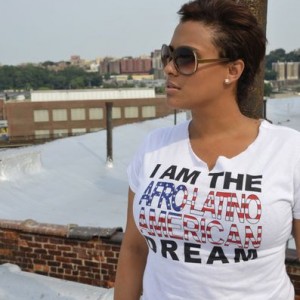 Crystal Shaniece Roman
Crystal Shaniece Roman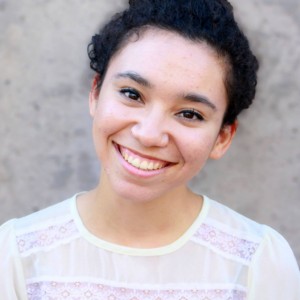 Carly Bates
Carly Bates Zavé Gayatri Martohardjono
Zavé Gayatri Martohardjono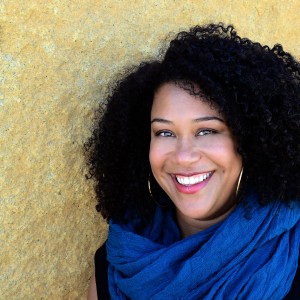 Lisa Marie Rollins
Lisa Marie Rollins Fred Sasaki EAT TO JAPANESE: Achieving ethnic authenticity by eating, shopping, emojis
Fred Sasaki EAT TO JAPANESE: Achieving ethnic authenticity by eating, shopping, emojis



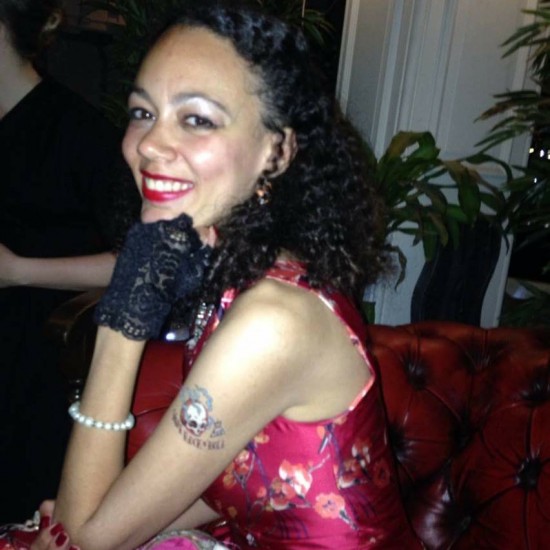
 Nicola Codner is 34 years old and currently training to be a person-centred counsellor in Leeds, UK. She is biracial and her heritage is White British and Black Caribbean. She has a strong interest in difference and diversity which led her into re-training as a counsellor. Prior to training as a counsellor she worked as a publisher in academic publishing. She’s keen to continue to develop my writing experience hence part of her interest in blogging. She has a degree in English Literature and Psychology.
Nicola Codner is 34 years old and currently training to be a person-centred counsellor in Leeds, UK. She is biracial and her heritage is White British and Black Caribbean. She has a strong interest in difference and diversity which led her into re-training as a counsellor. Prior to training as a counsellor she worked as a publisher in academic publishing. She’s keen to continue to develop my writing experience hence part of her interest in blogging. She has a degree in English Literature and Psychology.

